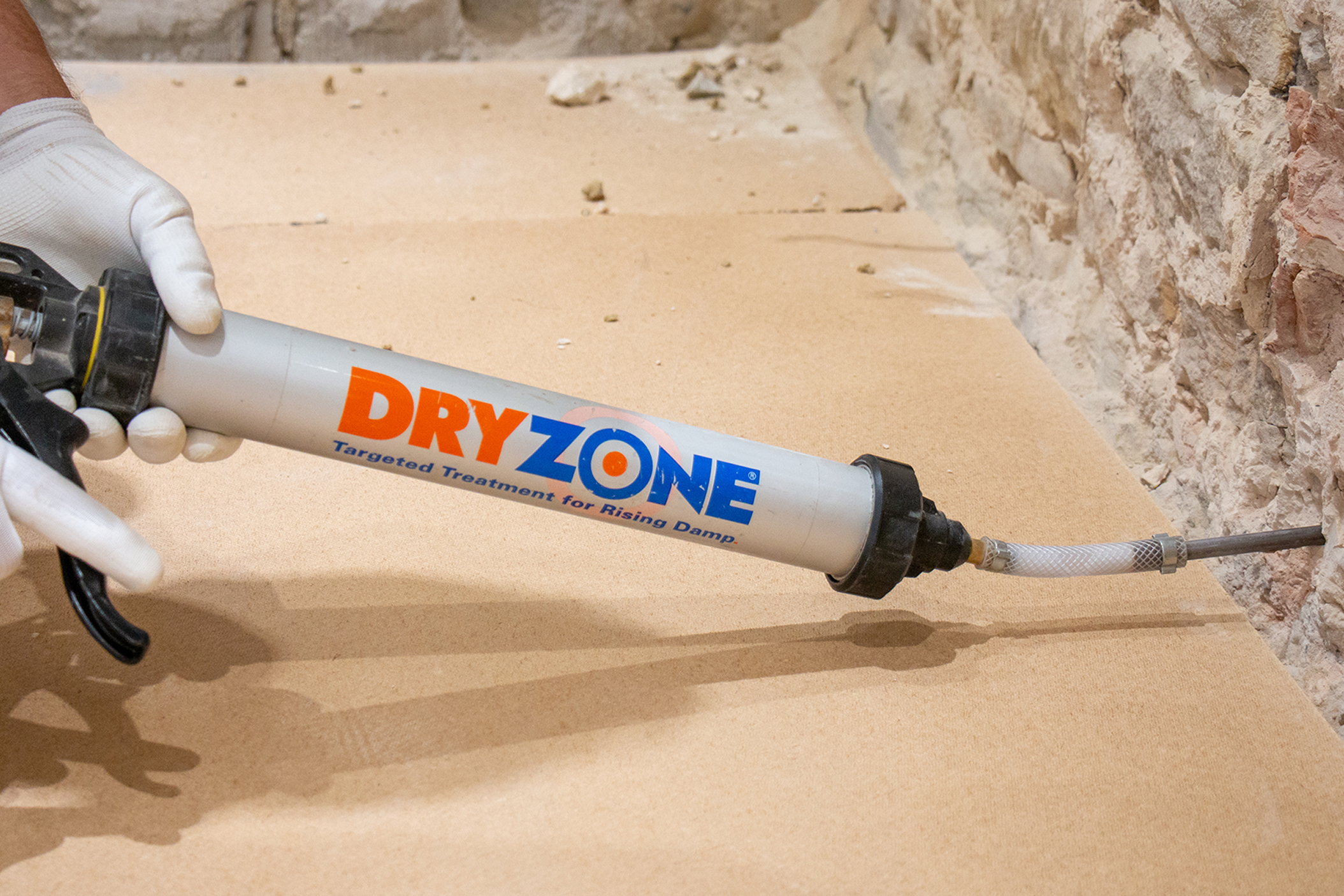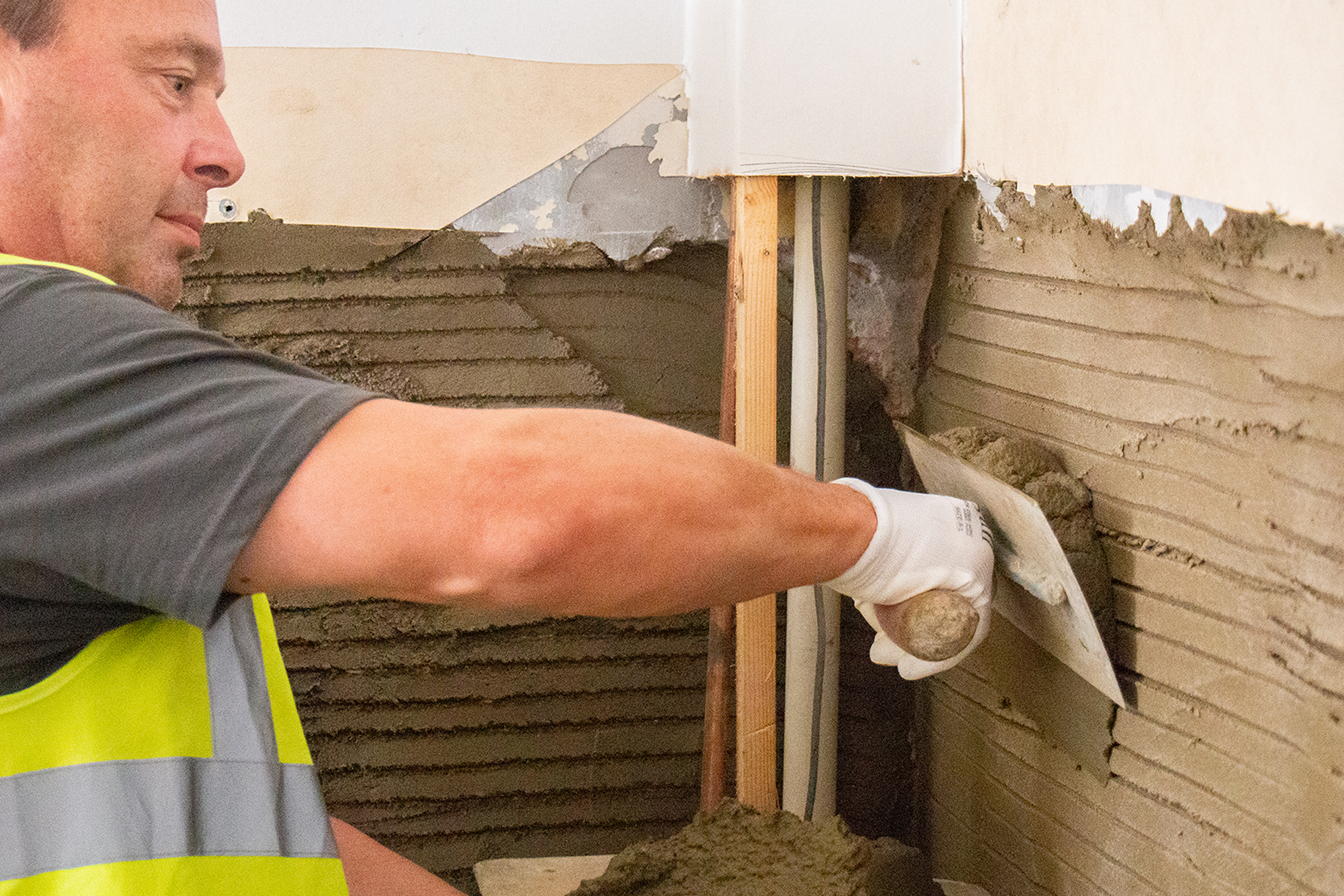Grade II Listed Business Property, West Sussex - Rising Damp in Stone Walls
Background

This grade II listed property in West Sussex is being used as a dentist’s surgery. The building dates back to the 1800s. The construction of the building is varied and consists of an original stone-built structure with various extensions and additions, which were built using either concrete blockwork or standard fletton bricks.
Damp-proofing experts, MGA Contracts were brought in to assess suspected rising damp issues discovered by another contractor carrying out wider refurbishment works.
The Problem

The walls utilised various construction methods
MGA started investigating the problem by carrying out a full survey of the property. Investigation of the walls revealed that the original stone-built wall was suffering from rising damp, due to absence of a damp-proof course. This is not uncommon for building built before the 20th century.
The extended exposure to groundwater from the rising damp had also left the wall contaminated with hygroscopic salts, spoiling the plaster. Further investigation of the property revealed that the floor timbers were rotting due to exposure to moisture.
The Solution
MGA removed the contaminated plaster from the floor up to a height of 1 meter. They then used Dryzone Damp-Proofing Cream to create a new damp-proof course along the wall. Dryzone is simply and easily injected into holes drilled along any continuous horizontal mortar course. It was also applied up the vertical joins with unaffected walls to help isolate them.
Once injected, the active water-repellent ingredient contained within the Dryzone cream diffuses along the mortar course and cures to form a barrier to rising damp. “Dryzone is a reliable and proven method for stopping rising damp, which is why we choose to use this product.” says Tom Harris, Manager at MGA.
The walls were then replastered using the traditional method of a 3:1 sand and cement render, mixed up using Dryzone Renderguard Gold to impart the render with enhanced damp-resistant and salt-resistant qualities. The render is usually applied in two coats and built up to a thickness of approximately 24 mm. Once the render had cured, a standard gypsum skim coat was applied.
The damp and rotting floorboards were replaced where necessary and then the remaining timber was isolated and treated with ProBor 10 Wood Preservative Liquid to ensure that the rot did not come back.
With the source of the dampness cut off and the salt-contamination dealt with, the refurbishment contractors could carry on with their works. Another job well done by MGA Contracts and the Dryzone System.

